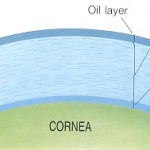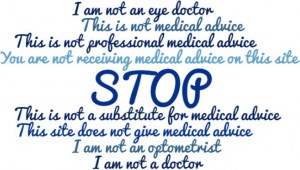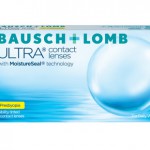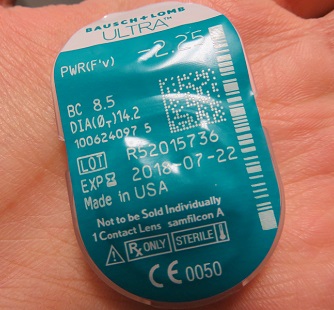It is becoming increasingly common for people to spend longer and longer hours in staring at the computer. This is not only because of the addicting nature of social media, videos games, YouTube, etc. Nowadays more and more jobs require us to sit at a terminal and stare at the computer screen all day. How does this much computer use impact someone wearing contact lenses? Let’s explore that topic a little.
I am not a doctor. The information provided on this page is for general educational purposes only. You are not receiving medical advice, being given a diagnosis or being prescribed treatment. Please read Contacts Advice Terms of Use before continuing.
The Importance of Blinking
Contact lenses are foreign objects placed on the surface of the eye. They are made in such a way that they reduces the amount of irritation as much as possible, however, their designs are based on several assumptions. These are that you only wear them for a certain number of hours, and that throughout the day you are blinking normally.
 Blinking is very important as it serves many critical functions that ensure the proper functioning of the eyes. When our eyes are open, they are protected only by a thin fragile layer of tears referred to as the ‘tear film’. When we blink, our eyelids spread a fresh new tear film over the surface of the eye, and this process prevents our eyes from drying out.
Blinking is very important as it serves many critical functions that ensure the proper functioning of the eyes. When our eyes are open, they are protected only by a thin fragile layer of tears referred to as the ‘tear film’. When we blink, our eyelids spread a fresh new tear film over the surface of the eye, and this process prevents our eyes from drying out.
For contact lens wearers, this process of spreading the tear film over the surface of the eye is even more important because the contacts need to stay hydrated in order to stay comfortable. If the eyes dry out, the contact lenses will dry out. Before you discard your next pair of contact lenses, let them dry out on the bathroom counter. They will turn very hard and brittle. And ask yourself if you want that to be in your eyes…
The Effect of Computers on Blinking
 Now back to how this relates to computers. When we’re staring at the computer, our blink rate (how many times we blink in a minute) goes down. This happens without us being consciously aware of it. When the time between blinks increases, the eyes have more time during which they dry out. If you’re wearing contact lenses as this is happening, you will notice your contact lenses becoming quite uncomfortable.
Now back to how this relates to computers. When we’re staring at the computer, our blink rate (how many times we blink in a minute) goes down. This happens without us being consciously aware of it. When the time between blinks increases, the eyes have more time during which they dry out. If you’re wearing contact lenses as this is happening, you will notice your contact lenses becoming quite uncomfortable.
To prevent this from happening, it is important to select a brand of contact lenses that retains moisture well. Brands such as ULTRA by Bausch + Lomb, Acuvue Oasys 1-Day by Johnson & Johnson and Dailies TOTAL-1 by Alcon are well known for their comfort and ability to retain moisture while at the same time allowing ample oxygen through to the eyes.
However, sometimes additional steps may be required to ensure comfortable contact lens wear throughout the day in front of a computer. If your contacts aren’t lasting through your work day, supplementing your own tear film with artificial tears can be very helpful. When using this strategy it is helpful to start applying drops before the discomfort typically begins. Artificial tears are more effective at preventing dryness before it starts, than recovering from dryness once it has already set in.
Not all artificial tears can be used with contact lenses. To learn more about the best eye drops for contact lens wearers, read this article.
Long Term Effects of Staring at a Computer
 Blinking not only serves to spread a new layer of term film over the eyes, keeping them moist and lubricated. It also helps to express the glands found in our eyelids called the meibomian glands. The meibomian glands line the upper the and lower eyelids, and they are responsible for producing and excreting oils which contribute to the overall strength and quality of your tear film.
Blinking not only serves to spread a new layer of term film over the eyes, keeping them moist and lubricated. It also helps to express the glands found in our eyelids called the meibomian glands. The meibomian glands line the upper the and lower eyelids, and they are responsible for producing and excreting oils which contribute to the overall strength and quality of your tear film.
Each time you blink, it applies some pressure to the glands, which helps to pump out some of the oils being produced inside the glands themselves. Staring at a computer screen or other digital devices for a long time causes us to blink less frequently, which means the oils are not pumped out of the meibomian glands as much, which can cause them to become blocked in the long run.
The process described above can lead to a condition known as meibomian gland dysfuntion (MGD). MGD is a leading cause of dry eyes, which is the biggest problem contact lens wearers face. Read this article to learn more about how to prevent and treat MGD.





Leave a Reply